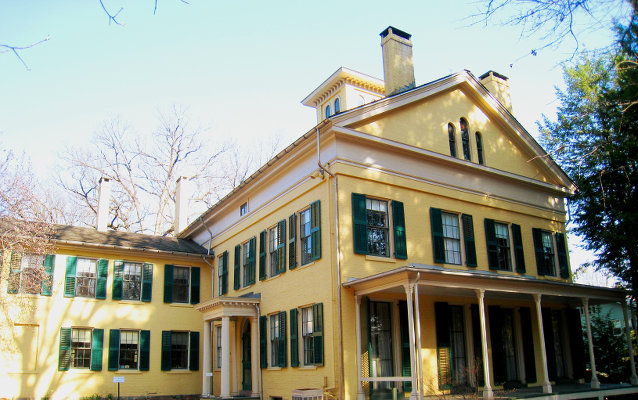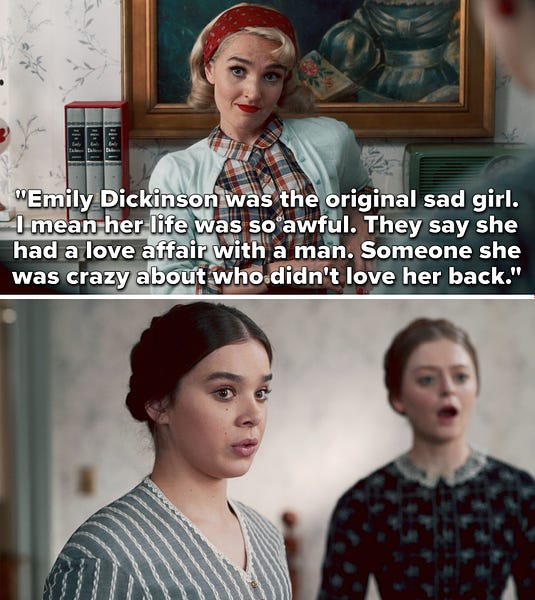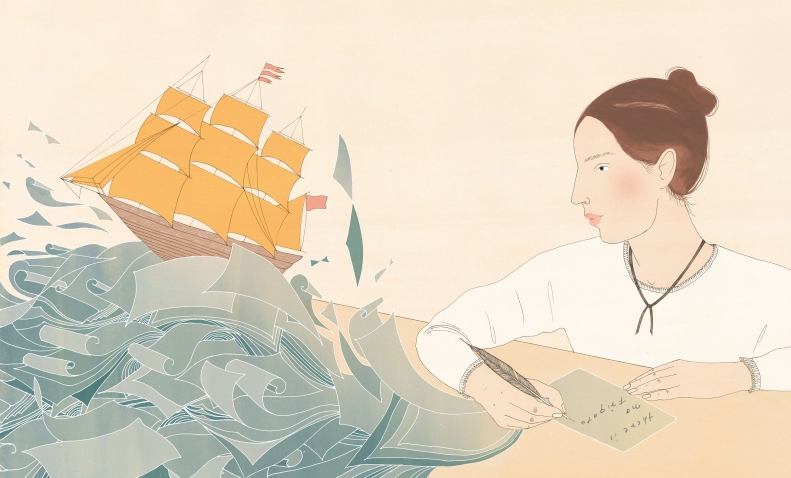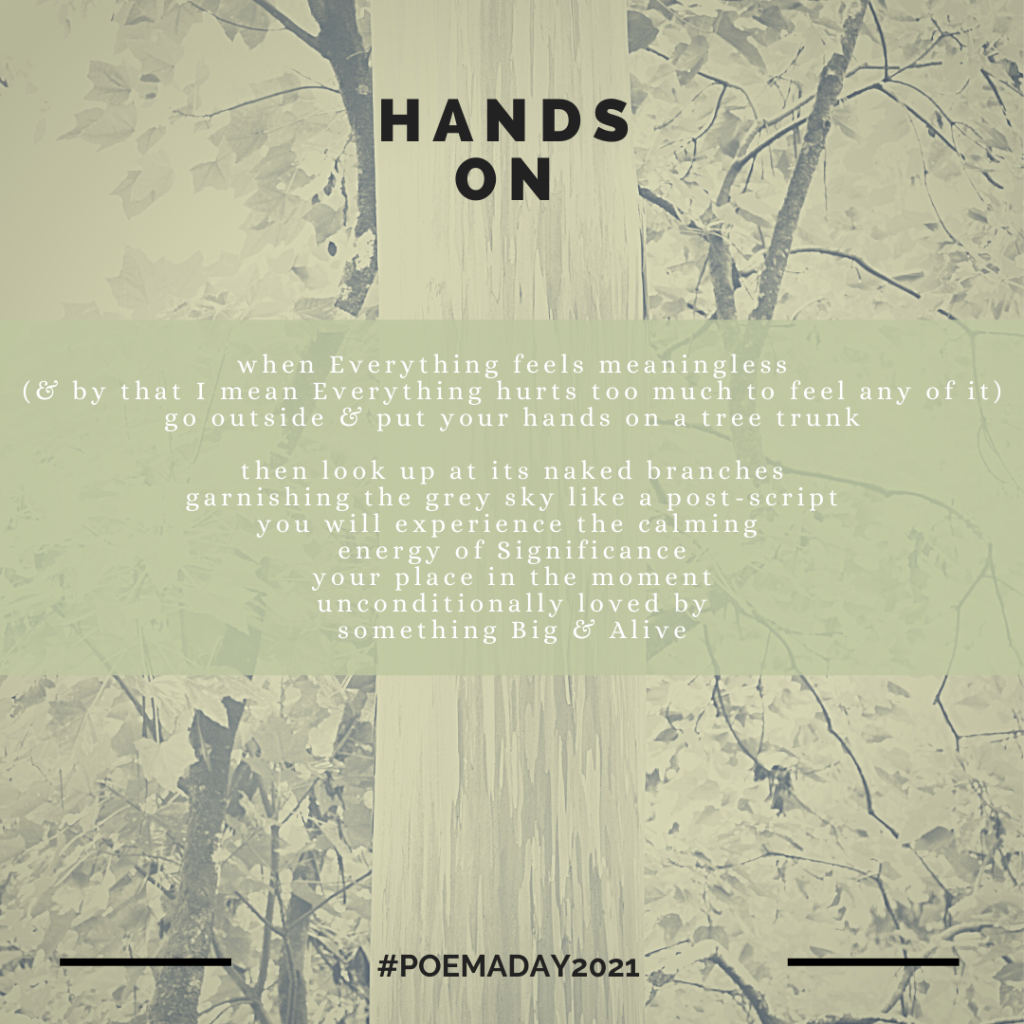Emily Dickinson is often depicted as a reclusive and solitary figure, isolated from the outside world and choosing to spend much of her time in seclusion within the walls of her home in Amherst, Massachusetts. This image of Dickinson as an isolated individual is supported by her own words, as she frequently wrote about themes of isolation and loneliness in her poetry. However, this portrayal of Dickinson as completely isolated from society is not entirely accurate, as she had close relationships with family members, friends, and correspondents who played an important role in her life.
One of the main factors that contributed to Dickinson's perceived isolation was her physical separation from the world. As a woman in the 19th century, she was expected to adhere to certain social conventions and norms that restricted her ability to engage with the outside world. Dickinson was also suffering from various physical and mental health issues that may have made it difficult for her to leave her home and interact with others. Despite these limitations, Dickinson was able to maintain close relationships with those who were important to her, including her family, friends, and correspondents.
Dickinson's poetry is often characterized by its intense focus on themes of isolation, loneliness, and alienation. In poems like "I'm Nobody! Who are you?", Dickinson explores the feelings of insignificance and isolation that can arise from being an outsider or nonconformist in society. In other poems, such as "The Soul has Bandaged Moments," Dickinson delves into the emotional pain and isolation that can come from loss and grief.
However, Dickinson's poetry also reflects the ways in which she was able to find solace and connection even in her isolation. In poems like "Hope is the thing with feathers," Dickinson writes about the sustaining power of hope and the way it can provide a sense of comfort and connection to others. In other poems, such as "I dwell in Possibility," Dickinson celebrates the freedom and creativity that can come from being removed from the demands and expectations of society.
In conclusion, while Emily Dickinson's life and poetry often revolve around themes of isolation and loneliness, it is important to recognize that she was not completely isolated from the world. She maintained close relationships with family, friends, and correspondents, and her poetry also reflects the ways in which she found solace and connection even in her isolation.
Emily Dickinson on Loneliness

What captures Emilys poetry is her emphasis on the topic of emotion and pain, the influence captured from subjects and events, and her unique style of mechanics. Emily lived at home, with her sister, for many years and took care of her parents until their deaths. Even at an early age, death served as an evident force within her life through the losses within her friend group and family. It is mentioned in poets. Emily Elizabeth Dickinson was an American poet born in Amherst, Massachusetts on December 10, 1830. Vivian Maier's work transports us to the streets of Chicago and New York, and her success has led to questions about her personal life. People considered her as an eccentric, as she showed disinclination towards guests, which in some cases, even caused them to leave, leaving most of her acquaintanceships founded upon by correlation.
Isolation Depicted In Emily Dickinson's Poems

She has been described as a recluse, a hermit, an agoraphobic, and even said to be insane. More than this, our minds give us the ability to read and think and empathize with others, allowing for the expansion of our inner world. Emily Dickinson was a woman of many complex personas—which is most prevalent in the letters she wrote to her sister, Susan. Emily Dickinson was very different person, she isolated herself from everyone. She also enjoyed several benefits from saying in the Homestead, such as a large conservatory where Dickinson could cultivate various types of plants …show more content… Therefore, it appears as though Dickinson had the ability to live a social life but made the decision not to Amherst College.
Isolation In Emily Dickinson's Poetry

With rapture almost, she let herself drop into the blissful sensation of visualizing herself in different, strange places, among approving and admiring people, where she would be appreciated, and understood. Her poetry was deemed peculiar and many refused to publish her because of it. From a young age, she aspired to one day become a poet. The Essence of Emily Dickinsons PoetryEmily Dickinson published exactly ten out of one thousand and eight hundred poems during her lifetime. She writes about art, fiction, and history, focusing mostly on modern and contemporary literature and American cultural history. Emily Dickinson Isolation 422 Words 2 Pages Emily Dickinson is a very popular writer and poet who has many popular works that are read today. Emily Dickinson died in Amherst in 1886.
“How Soft This Prison Is”: Reading Emily Dickinson in Quarantine

Most of her writings were very dark and morbid. This had a huge impact on many of the poets of this literary period, including Emily Dickinson. She was originally published in 1890 by some of her acquaintances, who heavily edited and altered her work. Yet this side of him wasn't always evident - in many interviews he came across as sullen or taciturn. After all, Distance — is not the Realm of Fox Nor by Relay of Bird Abated — Distance is Until thyself, Beloved. Therefore, her seclusion caused her to be so creative. I will be using the similarities of both poems and also some of their differences to prove… Emily Dickinson Emily Dickinson was a very creative poet, but what led her to her dark, depressing themes? While most of us would not willingly choose quarantine as a permanent lifestyle, the shake-up caused by this drastic change may lead us to reflect on our choices: What is most necessary and important to us and what is not? Jonhson means that Dickinson poems are about these topics, she persistently likes to express her ambiguity and questioning of these topics.
Why did Emily Dickinson live in isolation?

LINK IN BIO What better way to escape pandemic-related isolation than by checking out some photography? She is one of the most famous poets to have ever lived, and yet much about her life is very intriguing and misunderstood. Dickinson's light tone, silly voice, and welcome to the peruser to be on her side, nonetheless, keep the sharp edge of the parody from cutting too stingingly. Emily Dickinson loved kids and wanted a family but never ended up getting married or having children. Her style of poetry is largely influenced by her childhood, her poems are world-renowned, and many things in her life made her decide to become a poet. She received little success during her life. Lyrical …show more content… This then repeated and created a smooth, flowing manner of reading.






